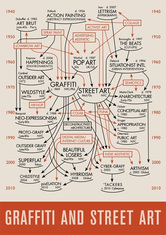State of the art

Greetings to all the patrons and practitioners of the arts alike. Welcome to Grafology, an online portal and information resource for entertainment and the study of the Art, Science, & Craft of Graffiti and Urban Street Art, in the Age of Information
Graffiti as a dynamic and maturing art form has encompassed the gambit of all the existing visual genres of the arts. This column will be an ongoing project to provide an effective forum and information referencing post to those committed to truly developing an academic appreciation for the art, craft, and science of Grafology.
Our peripheral positioning, enroute to centralized comprehension, is primarily focused in the collective apprehension by practicing artists and patrons of the global movement, of the core, essential principles of the art form in its many applications, and the academic, symbolic, and as they relate to language and writing origins in a larger cultural context. In this phased dialogue we will assess and recognize these attributes, and emphasize these qualities, in addition to there relative, associative values. Comprehending and appreciating the artistic works for purely aesthetical values, yet venturing beyond, thru pioneering historical references, to assessing and identifying purpose, intent, and direction of symbolic systems.
What is the current state of the Graf movement?
As in all major developing periods in the artistic realm, there are surges and recessions in trends and creativity, What can we as developers, engage in to nurture spansive growth, and ensure the form will evolve, and become an all encompassing medium, for effective visual communication, in addition to venturing into other avenues of creative or assistive language technologies.
Pictorial Semiotics is intimately connected to art history and theory. It has gone beyond them both in at least one fundamental way, however. While art history has limited its visual analysis to a small number of pictures that qualify as "works of art", pictorial semiotics has focused on the properties of pictures more generally. This break from traditional art history and theory—as well as from other major streams of semiotic analysis—leaves open a wide variety of possibilities for pictorial semiotics. Some influences have been drawn from phenomenological analysis, cognitive psychology, structuralist and cognitivist linguistics, and visual anthropology and sociology.
Graffiti as a dynamic and maturing art form has encompassed the gambit of all the existing visual genres of the arts. This column will be an ongoing project to provide an effective forum and information referencing post to those committed to truly developing an academic appreciation for the art, craft, and science of Grafology.
Our peripheral positioning, enroute to centralized comprehension, is primarily focused in the collective apprehension by practicing artists and patrons of the global movement, of the core, essential principles of the art form in its many applications, and the academic, symbolic, and as they relate to language and writing origins in a larger cultural context. In this phased dialogue we will assess and recognize these attributes, and emphasize these qualities, in addition to there relative, associative values. Comprehending and appreciating the artistic works for purely aesthetical values, yet venturing beyond, thru pioneering historical references, to assessing and identifying purpose, intent, and direction of symbolic systems.
What is the current state of the Graf movement?
As in all major developing periods in the artistic realm, there are surges and recessions in trends and creativity, What can we as developers, engage in to nurture spansive growth, and ensure the form will evolve, and become an all encompassing medium, for effective visual communication, in addition to venturing into other avenues of creative or assistive language technologies.
Pictorial Semiotics is intimately connected to art history and theory. It has gone beyond them both in at least one fundamental way, however. While art history has limited its visual analysis to a small number of pictures that qualify as "works of art", pictorial semiotics has focused on the properties of pictures more generally. This break from traditional art history and theory—as well as from other major streams of semiotic analysis—leaves open a wide variety of possibilities for pictorial semiotics. Some influences have been drawn from phenomenological analysis, cognitive psychology, structuralist and cognitivist linguistics, and visual anthropology and sociology.
